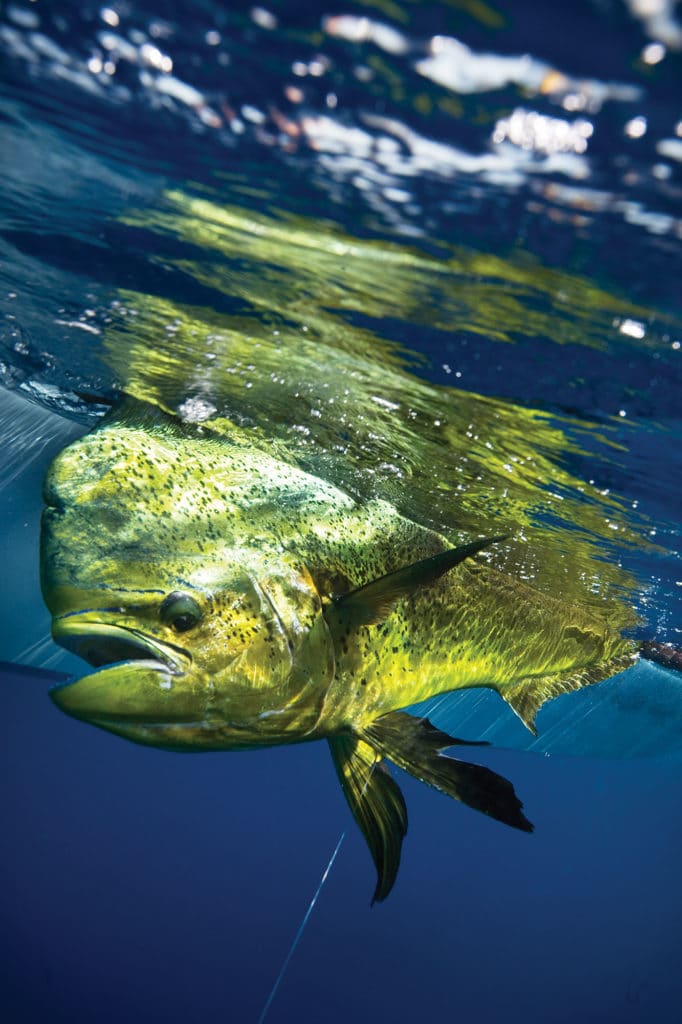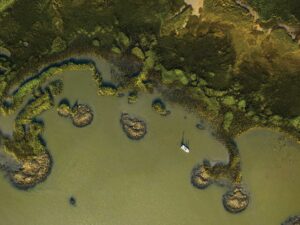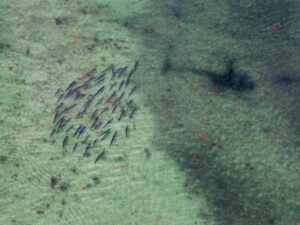Anecdotal information should not replace good scientific investigation. It can, however, be the impetus that gets scientific investigation moving ahead.
We may be seeing that happen with one of offshore fishing’s most popular targets: dolphin, also known as mahimahi to avoid confusion with the mammal. I tend to be old-fashioned by simply calling them dolphin.
Dolphin are one of the most popular offshore species. This magazine has done surveys that substantiate that claim. It is not surprising, as they can be found along the Atlantic Coast, from Key West to just south of Cape Cod, as well as throughout the Gulf of Mexico. They are aggressive feeders and fun to catch. They also make great table fare. Up until about a dozen years ago, they were primarily targeted by the recreational angler.

Today, there is a growing commercial fishery. If one simply looks at the annual catch limits (ACLs), recreational users get approximately 90 percent of the allocation, and for a couple of years (2014 and 2015), landings have been close to the same percentage. Recreational landings since 2005 have been trending lower on average.
Commercial landings have been up and down but trending a little higher. With the exception of 2014 and 2015, when the commercial fishery exceeded and just about reached its catch limit, both user groups have been substantially under their annual catch limits. This may indicate that the ACLs have been set too high. Frankly, that is hard to determine, as there is a real lack of stock-assessment data on this particular species.
This species is interesting from a scientific perspective. It provides a substantial forage component as well as being an exciting sport fish. According to the Dolphinfish Research Program located in Charleston, South Carolina, the annual production of juvenile dolphin suffers a total annual mortality level of 98 to 99.7 percent. This means only 0.3 to 2 percent of all juveniles produced in a given year survive a full 12 months. Also, this species has been reported to grow at the incredible rate of 1.3 to 2.7 inches in length per week.
Studies show that 75 to 100 percent of the recreational catch is fish less than 1 year old. Two-year-old fish are the exception.
Studies have shown dolphin are capable of reaching a body length of 4 feet and a weight of 40 pounds in less than 12 months. For recreational anglers, the good news is that this kind of growth is fueled by this fish eating everything it can, almost nonstop. Studies have also shown that 75 to 100 percent of the recreational catch is made up of fish less than 1 year old. Two-year-old fish are the exception, and the oldest recorded age is 4. This fish can be sexually mature at an early age, and by the time they are 22 inches in fork length, all are sexually mature. Another study indicated that a female of 39 inches would produce half a million eggs.
What does this all mean? Since the fish are so short-lived and such a small part of annual production becomes available for the recreational catch, any major hiccup (read: failure) in recruitment could spell disaster for offshore anglers. Problems could come from a variety of either climate or environmental changes. Don Hammond, who runs the DRP, has some concerns that something may be happening out in the ocean. The DRP started its tagging program 10 years ago. Since that time, the taggers working with the program have averaged about 1,500 dolphin tagged a year. In 2016, they tagged only 607, and one tagger, who had routinely tagged more than 200, tagged only five fish this year.
Does this spell recruitment failure? Not necessarily. Don Hammond indicates that it is only one of several possibilities. Changes in migration patterns and timing are one alternative that could have a short-term impact on catches but would not be as devastating as catastrophic spawning failure. While there is some real anecdotal evidence, the possible lack of fish has not shown up in the NOAA landings statistics. It looks like the recreational landings will come in right around 6 to 6.5 million pounds, measured in whole weight, which is the rough average of 2010 to 2015. The commercial ACL was increased by about 36 percent for 2016, along with a trip limit to control the catch. I do not know what sort of data there is on the level of commercial discard and its impact.
The real crucial information will come with the 2017 landings. If they come in anywhere near the average for the last six years, then it would mean the DRP drop-off in tagging for 2016 was an anomaly that apparently self-corrected. If, however, there is a substantial drop in landings in 2017, there will be need for immediate management action. With such a short life cycle, this species could be brought back quickly. On the other hand, because such a small percentage makes it to maturity, waiting too long to take action could spell disaster.
Lend a Hand
The Dolphinfish Research Program needs your help to continue its efforts. To become a tagger or make a donation, visit the Dolphinfish Research Program website.









